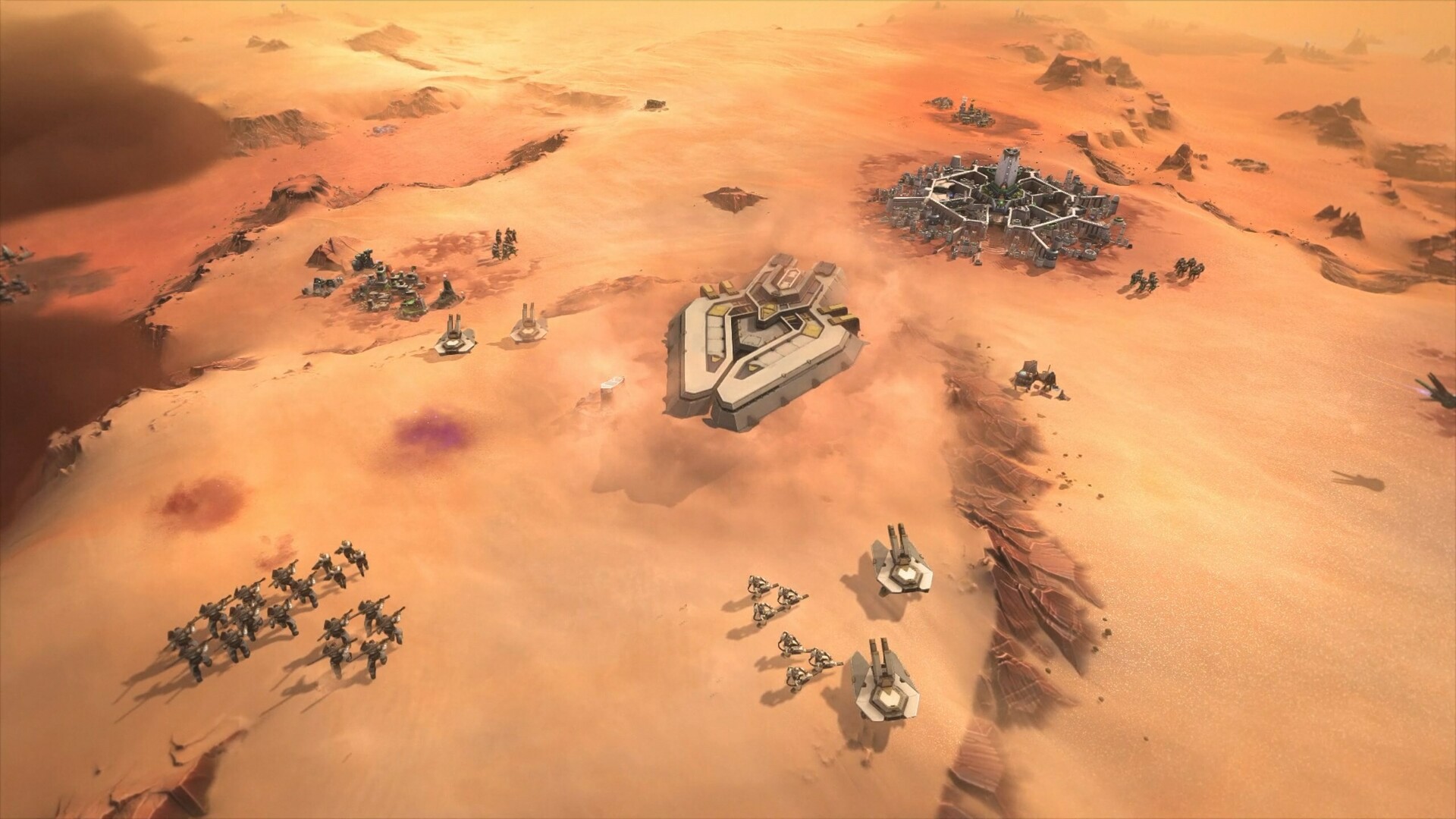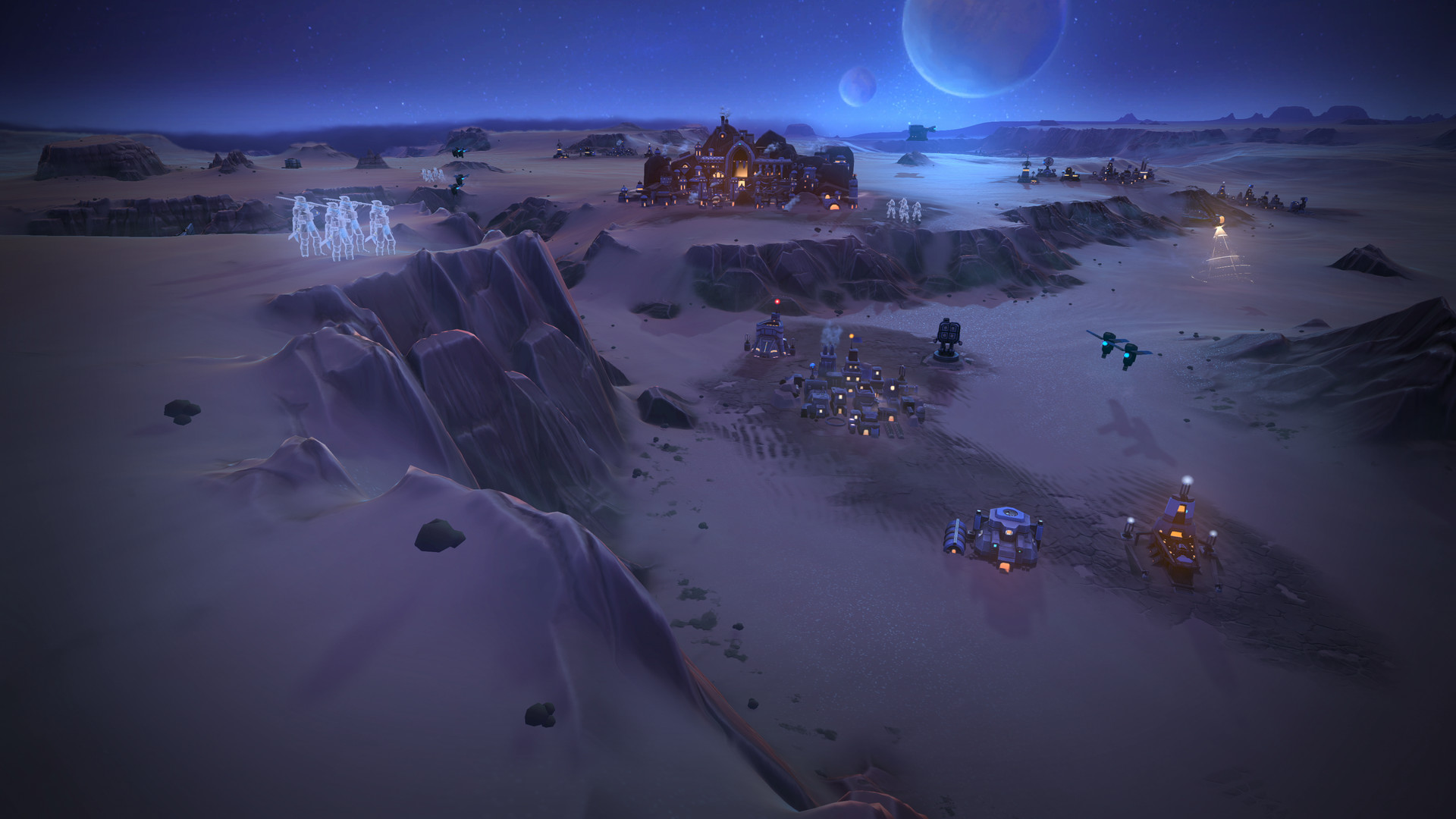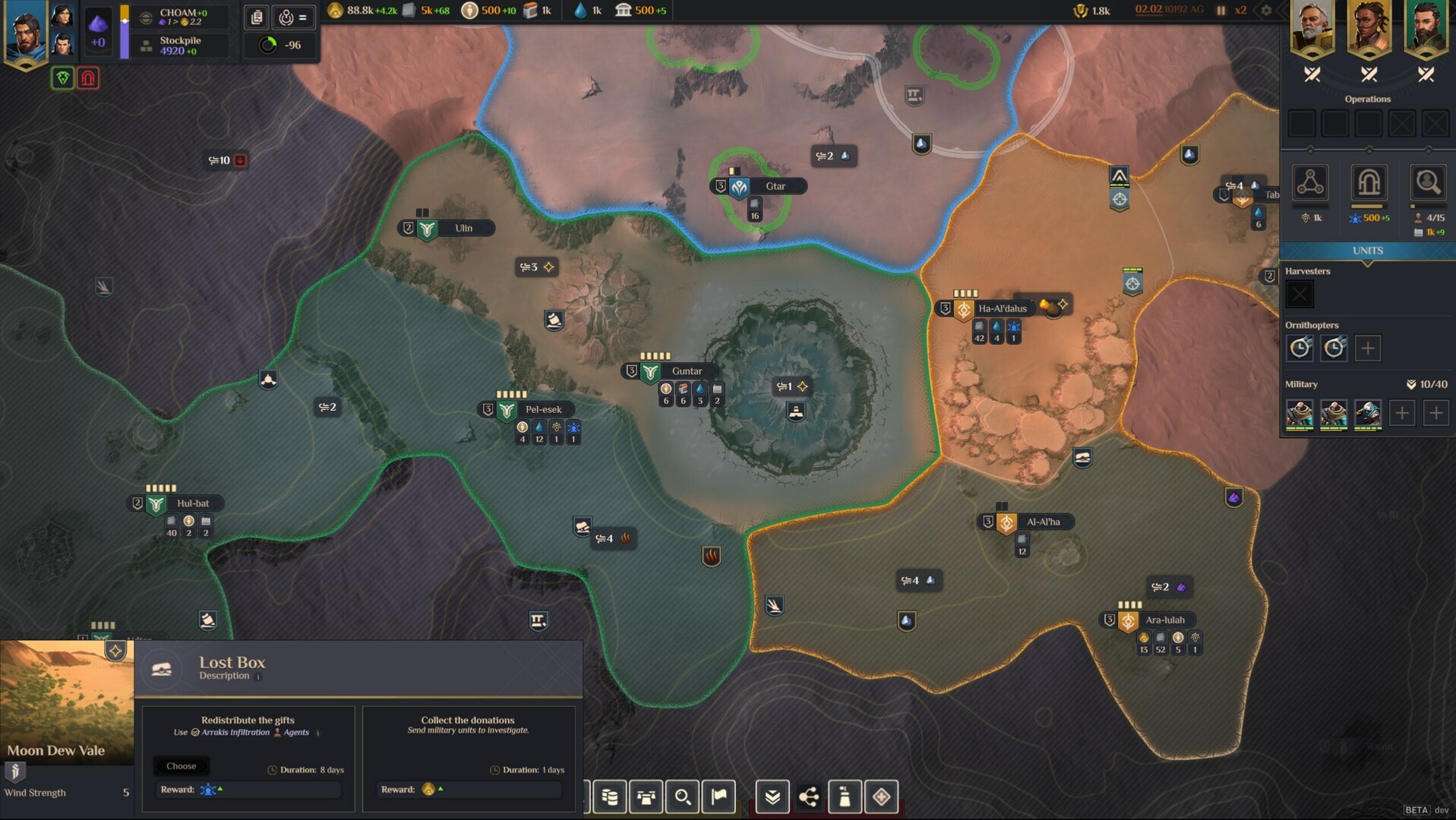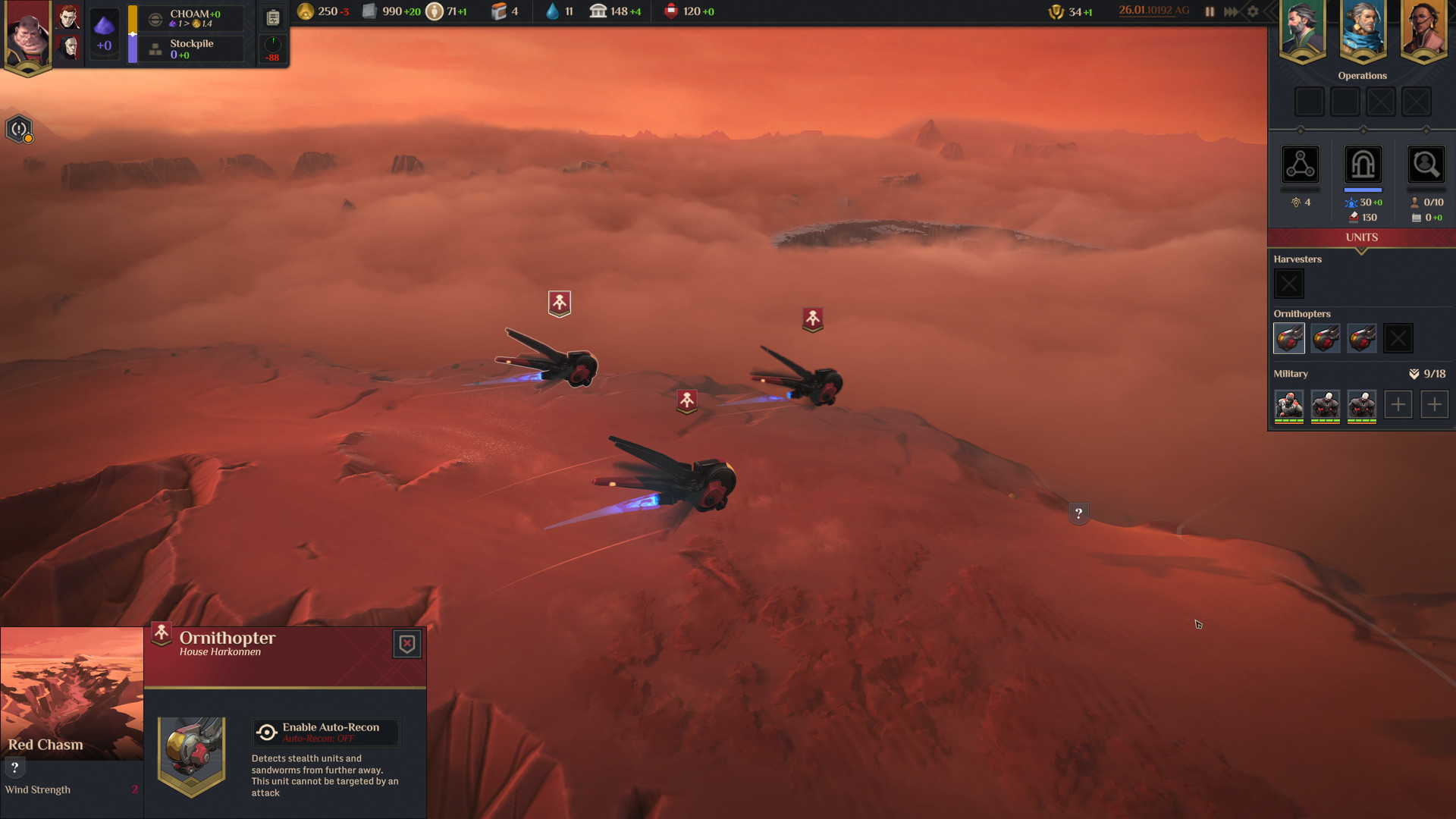Dune: Spice Wars is set on the famously barren planet of Arrakis – a forbidding world of sand and rock. Yet the game’s environmental art creates a vibrant, varied and starkly beautiful world that complements strategic gameplay intimately connected to the world’s geography.

Early in Frank Herbert’s original 1965 Dune novel, the villainous Baron Vladimir Harkonnen chortles over a model globe of Arrakis, calling it “the biggest mantrap in all history”. He glories in the planet’s dangerous hues – “these exquisite ripples, Their coloring: does it not remind you of sweet caramels? And nowhere do you see blue of lakes or rivers or seas.”
This is the world of Dune: Spice Wars – bereft of water and plant life, limited in its color palette to shades of brown, red, yellow and gray. The result is aesthetic minimalism, where diversity and beauty are served by spartan frugality.
Visual Variety in Dune: Spice Wars
Environmental diversity is an essential element of real-time strategy and 4X games like Dune: Spice Wars. Biomes like meadows and grasslands, rivers and marshes, coastal crags and rolling forests add a pleasing tonal variety as well as disparate tactical challenges.
By contrast, and by necessity, any portrayal of Arrakis has to account for its barrenness. Its lack of water features and plant life is core to the Dune universe. It is a world of deserts, of sand and stone, of harsh sun glare and punishing heat.

Yet Dune: Spice Wars features an astonishing variety of landscapes, sculpted from boulders and rocks. Like real-world deserts of Earth, Arrakis is home to a wide diversity of terrains, ranging from rolling dunes to sheer clifftops, from rocky plateaus to gaping craters. Shimmering light, silicon sparkles, sharp shadows and contrasts add to the sense of majesty and desolation. Arrakis is full of visual surprises.
Perhaps more importantly, its fidelity to the source material, and its willingness to startle the eye, creates an ambience of ever-present hardship, a flinty and unforgiving world where carelessness is punished severely.
Books to Life
In an interview, Adrien Briatta – Head of Marketing and Publishing at developer Shiro Games – noted that there is “not an infinite number of colors” for sand, adding, “it was challenging to find different aspects of the desert that could that could really give this sense of, ‘this is still desert, but it’s very diverse depending on where the action is taking place’.”
The developers conceptualized visuals that tried “a number of different ideas on how the planet of Arrakis should look and feel to best bring the world of the books to life.”
They sought input from a geologist who specializes in desert terrains, advising the team on the many different kinds of deserts, taking inspiration from salt pans, the Rocky Mountains, and stone monuments, all of which added a sense of majesty to their interpretation of Arrakis.

The first book names 15 places on Arrakis in its cartographic notes, from Carthag and the Cave of Birds, to Harg Pass and Rimwall West. Many of these find echoes in Dune: Spice Wars‘ names and locations – Acid Lake, White Rift, and Polar Sink – which are accompanied by icons showing eye-level perspectives on the desert world’s various features.
In turn, these sectors provide tactical problems for players seeking the most efficient and safest routes for their roving military units. The desert is the opposite of flat and featureless terrain. Its heterogeneity is formidable.
Other artistic choices conjure the world of Herbert’s creation. Blades, for example, play a huge role in the story – even in the first chapter, the hero, Paul Atreides, is threatened with a deadly knife. Likewise, in Dune: Spice Wars’ animated intro, sharp shadows evoke the harsh, unforgiving nature of the world through the allusion to bladecraft.
During combative gameplay, Dune: Spice Wars eschews large, colorful armies in favor of small, compact units. When they cross a section of desert, players feel a sense of isolation and of danger. The tiny units are surrounded by nothingness. If they are poorly led, they will perish, either from a want of supplies, or from the horrors of the sandworm, rising from the depths of the planet.

Then there are the hellish desert storms that bloom and drift, devouring anyone who tarries too long in their path. Worms and storms make even the most advanced late-game military units feel small and vulnerable. Installations are likewise unassuming. The player can zoom in and enjoy their detail, but from a broad, strategic viewpoint, they are designed to create a sense of isolation, to punctuate the deadly, open spaces of Arrakis’ topography.
All these visual evocations add to a sense of Arrakis as a place of danger, but of beauty too in Dune: Spice Wars. As Baron Vladimir Harkonnen noted, it is a jewel for those willing to take big risks. But for the unwary, it is utterly without mercy.

